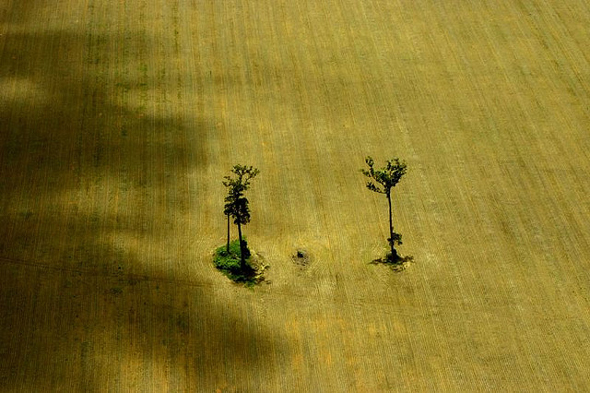-
‘The New York Times’ Highlights Converging Development Trends in Brazil’s Amazon
November 27, 2012 By Kate Diamond
The Amazon is home to some of the world’s most expansive rainforest – and, increasingly, some of Brazil’s fastest growing cities. Urbanization and deforestation are upending the traditional image of the Amazon, turning one of the world’s most biodiverse regions into an economic and demographic explosion, according to an in-depth article by Simon Romero in The New York Times.
Romero reports on the converging trends of population growth and urbanization in one of the last wilderness frontiers:
The torrid expansion of rain forest cities is visible in places like Parauapebas, which has changed in a generation from an obscure frontier settlement with gold miners and gunfights to a sprawling urban area with an air-conditioned shopping mall, gated communities and a dealership selling Chevy pickup trucks.
Population growth, he writes, is one driver of that change:
Altogether, the region’s population climbed 23 percent from 2000 to 2010, while Brazil as a whole grew just 12 percent.
Various factors are fueling this growth, among them larger family sizes and the Amazon’s high levels of poverty in comparison with other regions that draw people to the cities for work. While Brazil’s birthrate has fallen to 1.86 children per woman, one of the lowest in Latin America, the Amazon has Brazil’s highest rate, at 2.42.Interestingly, while economic opportunities in the Amazon’s fast-growing cities help draw migrants and contribute to urbanization, global trends play their part too. Romero notes that demand for construction materials in China – the world’s most rapidly urbanizing country – helps fuel the mining endeavors that sustain the Amazon’s fastest growing cities:
Here in Parauapebas, also in Pará, an open-pit iron ore mine provides thousands of jobs. Plans for additional mines here, supported largely by forecasts of robust demand in China, have lured many to this corner of the Amazon in search of work. Just since the 2010 census, the city’s population has swelled to an estimated 220,000 from 154,000.
Besides mining, other natural resource-intensive industries are driving growth as well:
Elsewhere in the Amazon, the biggest linchpins for the fast-growing cities are major energy and industrial projects. The construction of dozens of hydroelectric projects, including sprawling dams that have drawn protests, are luring manual laborers from around Brazil to cities like Pôrto Velho, in Rondônia State, and Altamira, in Pará.
Romero’s full article is worth reading, both for the quality of reporting and the importance of the subject. The Amazon is one of the most important carbon sinks for the world, absorbing far more carbon than it emits and therefore playing an important role in slowing climate change, but scientists warn that this could change as deforestation and other forms of environmental degradation persist.
As human activity continues to expand into the farthest reaches of the Amazon, the needs of local communities are likely to become more visible to development practitioners too. A recent ECSP event highlighted the complex gender issues increasingly at play in these development projects, especially health interventions and those targeting indigenous women. See Payal Chandiramani’s full post for more coverage, and click through our archives for more on the environment and development in Brazil.
Sources: The New York Times, ScienceNews.
Photo Credit: Deforested area in Mato Grosso State, courtesy of flickr user leoffreitas.
 A Publication of the Stimson Center.
A Publication of the Stimson Center.






